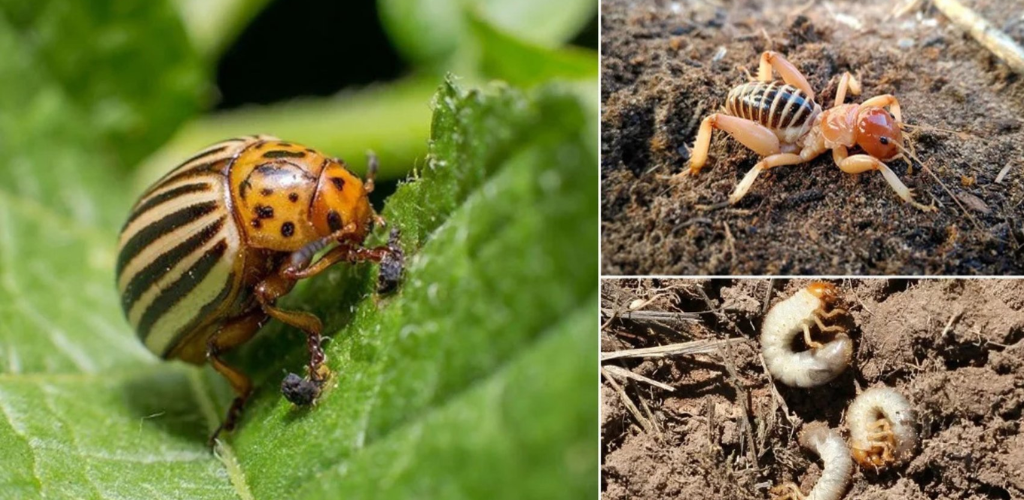The most powerful natural method to protect potatoes from beetles
Natural method to protect potatoes from beetles
Rapid action is essential when controlling the potato beetle, given its rapid reproduction and the voracious appetite of its larvae.
The potato beetle
Unfortunately, the potato is just one of many plants in the nightshade family that provide a perfect food source for the tempting but voracious potato beetle (Leptinotarsa decemlineata).
Other targeted plants
Other plants in this family that the beetle targets include tomato and pepper.
Description of the beetle
The adult form of this insect is typically about 10–12 mm long and has a yellow body with a black-spotted head and corset.
Origin and spread
Originally from the United States, this insect arrived in Europe in the 1920s, quickly causing significant damage to crops in the areas it invaded.
First signs of infestation
The potato beetle emerges during the warmer months, usually around May, after spending the winter underground as an adult.
Life cycle
This cycle repeats between June and September, producing 2 to 3 generations per year that can cause significant damage, even to late crops.
Beetle Identification
Identifying the Colorado potato beetle is a simple task. Both adults and larvae can be found in large colonies that have the ability to consume large portions of the plant’s foliage, eventually leading to skeletonization of the plant.
Potato Protection
The primary method of preventing Colorado potato beetle is the implementation of a comprehensive crop rotation strategy.
Bait plants
One possible approach to protecting potatoes from beetles is the use of “bait plants.”
Weed Eradication
One method to prevent the arrival of the Colorado potato beetle is to eradicate weeds from the area.
Use of insecticides approved for organic farming
When it comes to infestations, the use of insecticides is necessary. However, it is important to avoid using broad-spectrum products because they not only eliminate the Colorado potato beetle, but also its natural predators.
